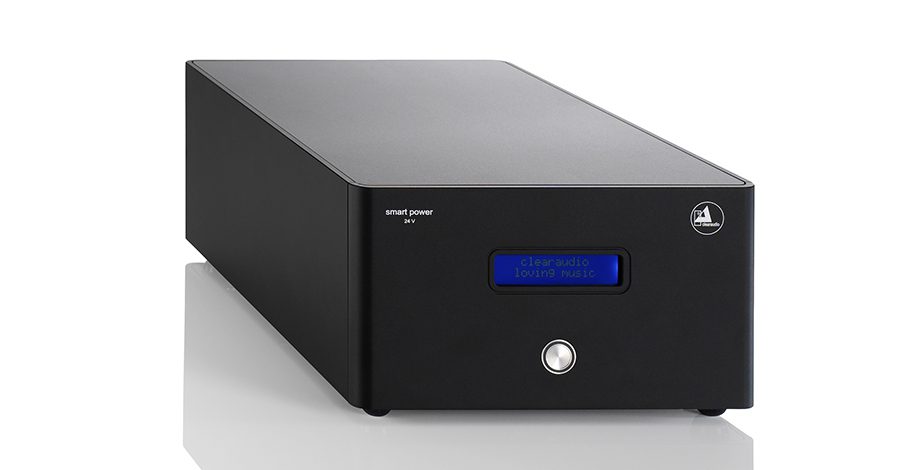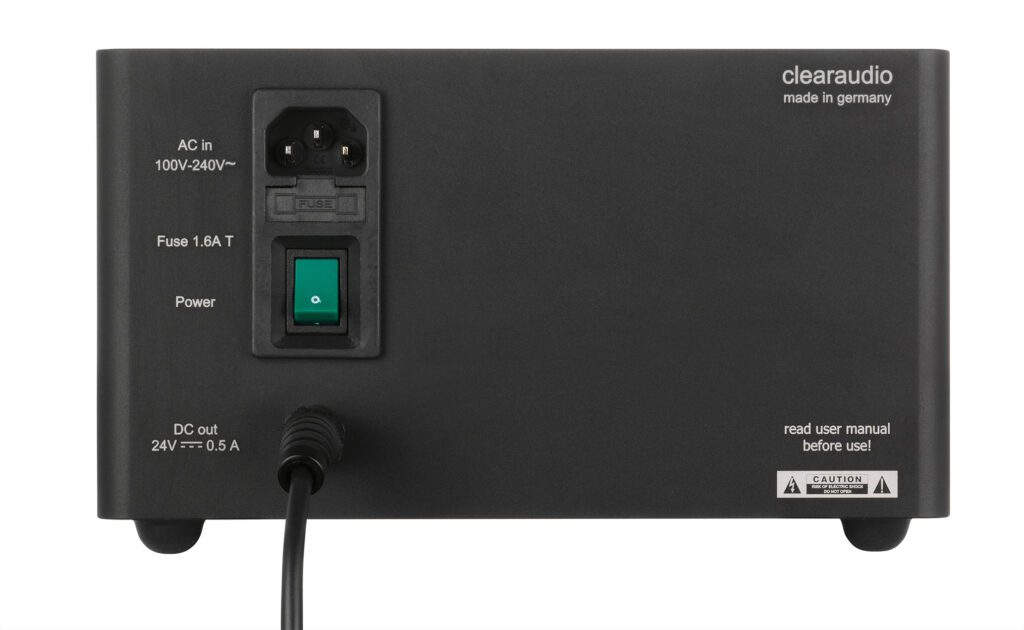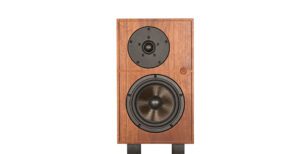
The Innovation turntable’s options have recently expanded to three different ways to power the platter motor. We looked at the Professional Power option back in Issue 208. Now it’s the time to explore Clearaudio’s top-spec PSU, based on battery power.
It shouldn’t be news that even small changes to audio power supplies can manifest as large changes in perceived sound quality, and so it was in the first part of this feature with the upgrade from basic wall-wart to the newest Professional Power 24V. Hitherto unreviewed, the Smart Power 24V here arguably deserves the closest look, introducing as it does a seismic overhaul to the deck’s already mighty performance.
Smart, in the classic sense
Despite the name, the Clearaudio Smart Power 24V is not that ‘smart’. And that’s a good thing. Smart is an overused prefix, applied to smartphones, smartwatches, and smart TVs. It’s typically a euphemism for a device that’s always chattering to a remote server, and all its benefits and abuses. The Smart Power blessedly does not have net access, and its ‘smart’ label likely comes from its quiet ability to automatically start recharging as soon as the batteries have run down.
The battery store comprises two 12-volt Ni-MH (Nickel Metal Hydride) packs rated at 5000mAh, each containing 10 Sub-C cells. That’s a total energy capacity of 120 Watt-hours, or about two large laptops-worth. When playing records for a few hours each day, I found the unit needed a full recharge every three or four days. Like all battery tech, the cells’ life is limited, and they will need replacing after about five years. These Vapex packs have Tamiya connectors and are designed for use in radio-controlled cars although in this larger specification are not especially easy to find from parts shops. Battery obsolescence is a concern, as I’ve been thwarted before when hunting down obscure and difficult-to-source batteries for kit several years after the manufacturer has discontinued the product. Clearaudio is currently selling the necessary pack of two for €178 in case you want to stock up.
The batteries are securely fastened to the lid inside, while the rest of the box is nearly empty, apart from a small control board PCB attached behind the front display and power supply fixed to the rear. That PSU lives in its own perforated Faraday cage, which along with the sealed metal case ought to confer good shielding to other components of radiation from the high-frequency switch-mode unit. And while this looks a good solution, I did find a smartly powered Innovation improved with box on a separate feed to other system electronics. Also note that while the turntable is running from pure battery DC, the unit’s electronics must remain active on mains power.
The Smart Power was also the first product I’ve found which didn’t enjoy the benefits of a Nordost Valhalla mains lead, instead preferring a humbler El Dorado.
Operation
The Smart Power 24V is a drop-in replacement for either the basic plug-top switch-mode power supply or the intermediate Professional Power 24V reviewed in Issue 208. It takes a regular IEC C13 cable from the mains, while a tethered 1.65 m cable plugs into the deck’s rearmost turret.
About the size of a shoebox and superbly crafted from solid CNC-cut aluminium plates, the Smart Power will need a shelf for itself – and it must be readily accessible to fly it from the single touch-sensitive button.
From cold, a long finger-press of two seconds brings it out of standby. The blue LCD display shows battery level with a horizontal bar graphic and a percentage figure. Besides automatically going into charge mode when flat, you can override any time by a short press on the button, answered with a ‘Start charging?’ message, which then requires a long press until it reads ‘Charging Active’.

Short finger taps will also cycle through a few screens that show the output current in playback mode, voltage and current when charging, and adjustment of backlight brightness, for both in-use and standby modes. It demands some thought to move around these options, given the single button and short/long-press logic; even after months of use I still found myself occasionally putting the unit into standby when trying to set manual charging. Usefully, Ni-MH batteries don’t suffer memory effect like older nickel cadmium batteries, so can be topped up anytime.
Annoyingly the Smart Power’s batteries will lose all charge if you leave the unit powered up with the platter static, so it’s best to put it into standby mode in longer breaks between records. A truly smart unit might sense a pre-set period of inactivity and go automatically into standby to save precious recharge cycles. Also rather distracting is the way the blue ring LED flashes when in charge mode. Blinking furiously at 90 bpm, you really don’t want it in your eyeline when relaxing to music. There is a small hit in performance though when playing and charging simultaneously, so it’s preferably to disengage charging when settling down to listen anyway.
Sound
If the Professional Power helps to tidy the final sound and secure greater atomic clock-like timing for the Innovation, the Smart Power builds on this upgrade further with a more meaty, solid, effortless, and unflappable sense of precision.
To my ears, the main transformation wrought by the Smart Power on the Innovation must be the way it brings a big magnifying glass to the entire bass region. Imagine the geologist’s view of the passage of prehistoric time as witnessed through layers of rock and sediment exposed in cross section. As we backtrack millions of years by looking down through the gradients of time, different shades and textures pick out the relative age of every layer. And so it was with the battery-fuelled Innovation, revealing layer by layer the contributions of different instruments in the previously homogenised underworld of low bass. Take the example of the rare phenomenon of dual bass guitars.
Plenty of rock music has two or more electric guitars playing rhythm and lead parts together, or even dual lead solos. But there’s a reason why only one bass guitar is needed – any more and it can quickly get blurred and murky in the nether octaves. And if two low notes only a semitone or two apart are sounded together there will be shuddering beating effects that can unsettle full-range systems.
Which is why it’s always nice to find the exceptions that prove the rule. Perhaps the most familiar example is Lou Reed’s ‘Walk on the Wild Side’ which sees session legend Herbie Flowers overdub glissando lines from two basses, acoustic and electric, simultaneously sliding notes in opposite directions.
Other songs previously filed under ‘a bit confused down below’ were easily understandable through the lens of Smart Power bass resolution. ‘One of these Days’ opens Meddle with an easy to hear dual bass setup, bounced along through Binson Echorec delays and separated into right and left stereo channels. That one’s easy, while the following track ‘Pillow of Winds’ has some odd bass parts, although it perhaps doesn’t take the Clearaudio combination to reveal this as a kind of portamento bass, using a heavy slide to glide between low notes. But fourth track ‘St Tropez’ has long been the puzzler with its slightly baffling bass line. This was now apparent as dual bass guitars from two multitrack takes: mostly in sync for the first few verses and instrumental break, then increasingly diverging by the second break and fade-out.
The jury’s out on ‘James and the Cold Gun’, where Kate Bush’s bass player also appears to have overdubbed, again with unison bass lines that subtly diverge in places.
Bass effects can get very murky where loops and samples are mashed up, say with just about any track from Portishead’s Dummy. ‘It Could be so Sweet’ was now revealed with a sub-bass pitched bassline making an alternate triplet pulse. And ‘Wandering Star’ delighted with its eery time-stretched organ below samples from War’s ‘Magic Mountain’.
In natural real-time recordings too, it’s so much easier to hear through the lower layers of pitch – like the Slovak String Quartet playing Shostakovich’s 7th, where the LF ‘sound’ of the room stands outside the lowest reach of the cello, and various ambient muted sounds from well outside the studio in Bratislava, 1966 – including the low thrum of passing cars or lorries that are working through the gears.
Conclusion
The Smart Power 24V builds the Innovation deep concrete foundations, enabling sublime clarity through the mid and top, and unheard-of resolution deep down below. Not just for shoring up rock and reggae, this insight into the very lowest octaves brings dividends to all manner of recorded sound, making it the single choice for the best-sounding way to power the Clearaudio Innovation.
Technical specifications
- Type 24 V power supply for Innovation DC motor
- Display Backlit LCD
- Batteries 2 × 12 V 5000 mAh Ni-MH batteries (VapexTech 10VP5000SC-H10-T1)
- Power 100–240 V AC SMPS
- Finish Black or silver finish options
- Dimensions (W×H×D) 209 × 124 × 303 mm
- Weight 6.6 kg
- Price £2,760
Manufacturer
Clearaudio
UK Distributor
Sound Fowndations
www.soundfowndations.co.uk
+44(0)118 981 4238
By Andrew 'Harry' Harrison
More articles from this authorRead Next From Review
See all
PrimaLuna EVO 100 phono preamplifier
- Apr 22, 2024

Reiki Audio SuperSwitch Master Pro + Servant Pro
- Mar 27, 2024

Melco Audio N1-S38 music server
- Mar 27, 2024











